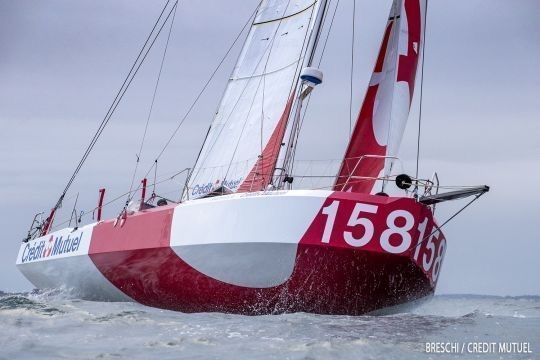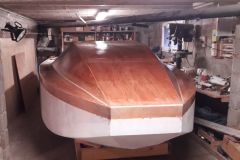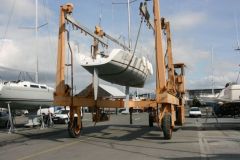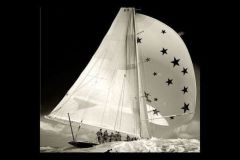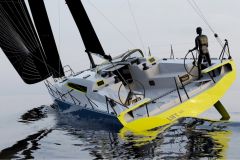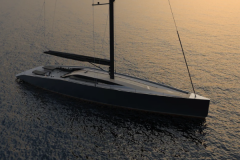The origins of scows: American lakes as a playground
The history of scows began at the end of the 19th century on the great North American lakes, particularly in Wisconsin and Minnesota. These flat-bottomed boats with rounded prows were initially designed to navigate shallow waters with maximum stability. The word "scow" was then used to designate a flat-bottomed transport barge, but local sailors soon adapted the concept to sailing, giving rise to surprisingly fast dinghies.

The first true regatta scows appeared in the 1890s, with the A, E and C scows. Very wide, with a very large sail area and simple rigs, these dinghies revolutionized racing on sheltered waters.
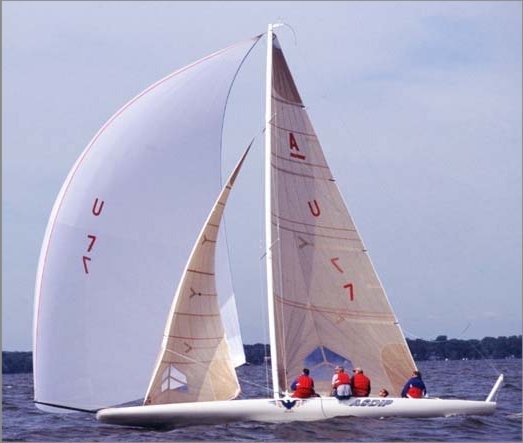
The scow, a UFO on regatta waters
Throughout the 20th century, scows earned a solid reputation in light sailing and freshwater regatta circles. They were mainly seen in the United States, but some models crossed the Atlantic to compete in Europe. Their downwind performance, in particular, is astonishing: these light boats offer a sensation of speed close to planning, long before modern boats democratized this behavior.
Yet their popularity remains marginal, hampered by a disconcerting aesthetic and a hull considered too radical for open seas. For a long time, scows remained confined to confidential circuits, adored by purists but little represented on European pontoons.
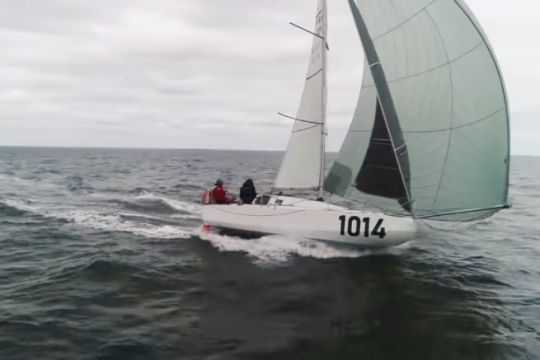
Renewal through ocean racing
That all changed in the early 2010s with the arrival of the first scow-type Mini 6.50s. In 2013, David Raison won the Mini Transat aboard Magnum, a prototype with a revolutionary round nose. This design, inspired directly by American scows, is a bombshell in the world of ocean racing. Its voluminous bow offers greater downwind lift, enabling the boat to ride the waves longer.
Naval architects quickly became interested in this unique hull. Scows were first introduced in the prototype classes, then in the Mini 6.50 series, before making their appearance in the Class40s - Ian Lipinski's Crédit Mutuel was a forerunner - and even in the IMOCA class. Proof of this is provided by the construction of Eric Bellion and Jean Le Cam's latest IMOCA boats, scows with straight daggerboards.
The rise of small cruise scows
This recognition in racing also inspires cruising shipyards. The scow is no longer reserved for extreme sailors. Architects such as David Raison, Samuel Manuard and Axel de Beaufort are designing cruising yachts inspired by scows: compact, seaworthy, stable and easy to steer.
Models such as the Pogo 3, the Maxus 22, the Pointer 25 Scow and the Virgin Mojito from IDB Marine take this approach to yachtsmen. These newcomers seduce with their accessibility, reassuring behavior and planning potential from 10 knots of wind. Thanks to their width, they also offer astonishing habitability for their size.
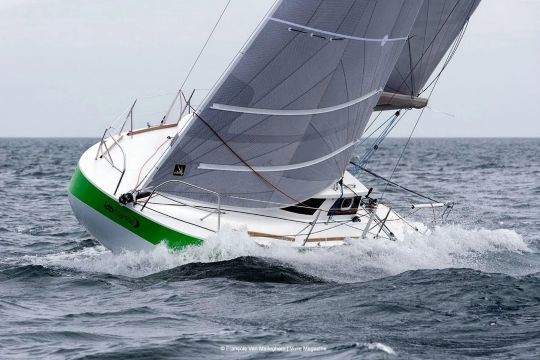
A hull from the past resolutely turned towards the future
The history of scows is that of a return to basics. What began as a compromise for shallow water sailing has become a design philosophy in its own right. Between performance, stability and volume, scows redefine the codes of modern sailing.
Long considered UFOs, they are now emerging as credible alternatives to the traditional tapered hull, for both racing and cruising. A fine example of reinvention, where the architectural audacity of yesterday shapes the boats of tomorrow.

 /
/ 